45 Wildflowers That Grow in Oregon (Identification Guide With Pictures)
-
- Last updated:

Oregon has an incredible mixture of ecoregions, from volcanic islands and desert regions to snow-capped mountains and meadows. This results in a diverse range of wildflowers, including many native and introduced varieties.
Whether you’re on the Land Trust’s wildflower hike or are exploring the region yourself, below are 45 wildflowers that are commonly found in Oregon, organized by the color they are most often seen.
We’ve organized these wildflowers into the following colors categories:
- Blue Wildflowers
- Purple Wildflowers
- Pink Wildflowers
- Yellow Wildflowers
- White Wildflowers
- Red Wildflowers

Blue Wildflowers
1. Chicory

- Latin Name: Cichorium intybus
Chicory is a beautiful blue perennial that can grow to around 4 feet tall. Commonly found next to roads and in open fields, the plant has long been popular for its medicinal properties. It is also used as a substitute or an addition to coffee. The chicory flower only blooms for a single day.
2. Cornflower

- Latin Name: Centaurea Cyanus
Also known as the bachelor’s button, the cornflower is an annual plant that grows to around 3 feet tall and blooms in summer. It is resistant to drought and deer and is considered easy to grow in gardens, as well as being abundant in parts of Oregon. It is popular because it attracts butterflies.
3. Forget-Me-Not

- Latin Name: Myosotis scorpiodes
The forget-me-not, or scorpion weed, grows to a height of approximately 1 foot. It is a perennial and can bloom all year except in winter. It gets the common name, forget-me-not, because it has an unpleasant smell that is difficult to forget. Forget-me-nots spread quickly and can overtake planting areas and gardens.
4. Nuttall’s Larkspur

- Latin Name: Delphinium nutallianum
Nuttall’s larkspur is a member of the buttercup family. It can grow up to 2 feet tall and can be found in meadows, forests, and brush. The colors of the larkspur flowers can range from a deep purple to a light blue.
5. Periwinkle

- Latin Name: Vinca minor
The common periwinkle, or lesser periwinkle, is a perennial that blooms all year round. It is a small plant, reaching a height of only 6 inches. It is deer resistant, and its low height makes it a popular choice for ground cover. It attracts pollinators including bees and bee flies.
6. Pleated Gentian
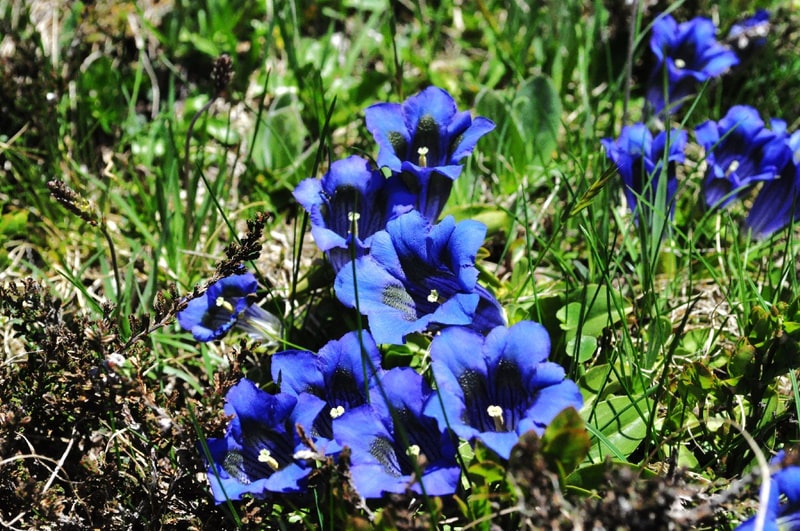
- Latin Name: Gentiana affinis
The pleated gentian is typically a light blue in color and found in moist areas, so look at damp meadows and mountainous regions of Oregon. Although it does tend to be quite a low-growing plant, it can reach a height of 2 feet or more if given ideal growing conditions.
7. Teasel

- Latin Name: Dispacus fullonum
Teasel may sometimes be called wild teasel or Fuller’s teasel, and it is a biennial that prefers full sun or partial shade. The flowers attract goldfinches, which eat teasel seeds as a winter food. The teasel has prickly stems and thistle-like flowers that are blue to purple in color. It is one of the more recognizable wildflowers in Oregon.
8. Vervain
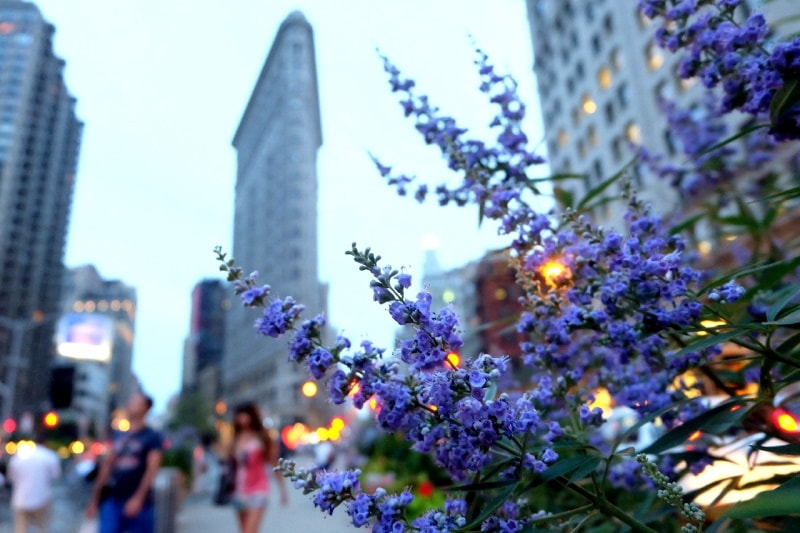
- Latin Name: Verbena hastata
Also referred to as blue vervain or swamp verbena, vervain prefers damp to wet conditions and is most commonly found in wet soil and ditches. It attracts pollinators like wasps and bees, and it can grow to 5 feet tall if given the right growing conditions.

Purple Wildflowers
9. Bee Balm

- Latin Name: Monarda fistulosa
Bee balm is sometimes known as horsemint. It has lilac-colored flowers and attracts hummingbirds as well as bees and other pollinators. It is usually found in dry areas, including fields and next to roads. It is a perennial plant that can be grown in gardens as well as found in the wild.
10. Bull Thistle

- Latin Name: Cirsium vulgare
Boar thistle, or bull thistle, is a thistle, which means that it is spiney and can be painful to touch. It is another wildflower popular with goldfinches, which feed the seeds to their young and use the plant to line their nests. It also attracts butterflies and beetles and can grow to 6 feet tall.
11. Burdock

- Latin Name: Arctium minus
Burdock, although used medicinally and even in drinks and food, can be a mild irritant, so take care when handling this flower. It can be found in most areas but especially likes disturbed ground and hedgerows. It grows to 6 feet tall and is sometimes known as wild rhubarb because it so closely resembles the rhubarb plant.
12. Dame’s Rocket

- Latin Name: Hesperis matronalis
Dame’s rocket goes by a lot of names, including Damask violet and mother-of-the-evening. It grows and spreads quickly, is commonly found in meadows, and it is an edible plant. The young flowers are sometimes put in salads and are high in vitamin C.
13. Ground Ivy

- Latin Name: Glechoma hederacea
Ground ivy only grows to about 6 inches tall, but it spreads rapidly, and its root system makes it difficult to remove once it takes root on lawns or other areas. It is popular with bees, but because it can be difficult to get rid of and tends to enjoy growing in grassy lawns, it is usually treated as an invasive weed.
14. Loosestrife

- Latin Name: Lythrum salicaria
Loosestrife likes wet conditions and is typically found next to lakes and rivers. It is an invasive species, and it can kill off local flowers if left to its own devices. This is because a single flower can produce as many as 300,000 seeds, which rapidly take over growing areas.
15. Purple Coneflower

- Latin Name: Echinacea purpurea
Echinacea is well known for its medicinal properties. In particular, this plant, which grows to heights of around 3 inches tall and is very hardy, is used to stave off colds and coughs. It also has anti-inflammatory properties. It is popular in the garden because it attracts pollinators like bees, butterflies, and hummingbirds.
16. Woundwort
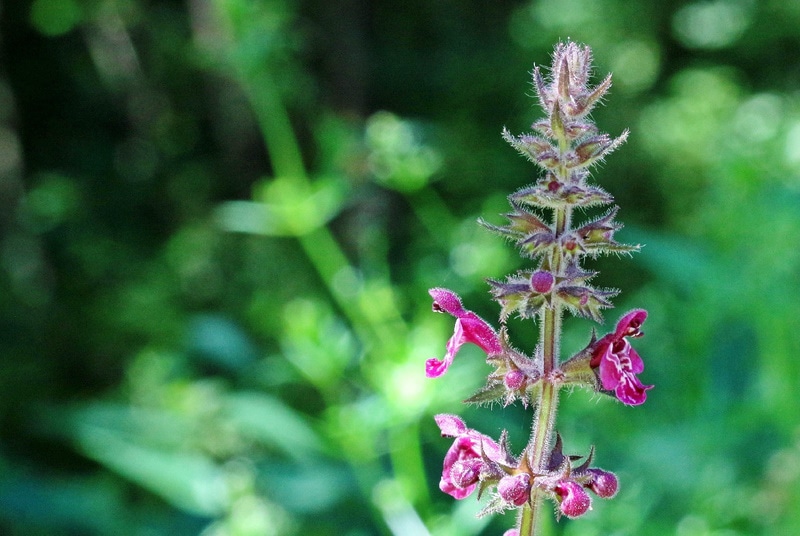
- Latin Name: Prunella vulgaris
Woundwort is also commonly known as heal-all because it can help heal injuries and also acts as a sedative when taken internally. The plant itself can grow to a foot tall, although it is usually shorter. It is considered invasive and can be found on lawns as well as on roadsides. Woundwort attracts butterflies, bees, and other pollinators.

Pink Wildflowers
17. Bitterroot

- Latin Name: Apocynum adrosaemifolium
Bitterroot is also known as dogbane because it is attractive but highly toxic to dogs. It is also toxic to humans. It is a very fast-growing and spreading plant that looks similar to lilacs, and it is normally found on the sides of rivers and other sandy locations.
18. Crown Vetch

- Latin Name: Securigera varia
Crown vetch is invasive and was introduced from Europe as a means of controlling soil erosion. It is usually found in sandy soil, grows to 6 feet tall, and will easily take over other plants if you choose to grow it in your yard. It is best to plant crown vetch in planters, away from your flower garden.
19. Fireweed

- Latin Name: Chamerion angustifolium
Fireweed is a hardy, resilient plant, and it will usually be found in areas that have recently suffered wildfires. In this respect, and because it attracts hummingbirds and other pollinators, it is considered a beneficial wildflower that can help restore life and color. It can grow up to heights of around 10 feet tall and typically blooms in summer.
20. Wild Mint

- Latin Name: Mentha arvensis
The perennial wild mint can come in different colors, including pink but also white or lavender. It likes wet conditions and partial sun, so it is usually found on riverbanks and by the sides of streams. It does have a mint scent, and this is most evident when the leaves are disturbed or damaged.

Yellow Wildflowers
21. Birds-Foot Trefoil

- Latin Name: Lotus corniculatus
The birds-foot trefoil is also known as cat’s clover. The perennial tends to be quite a low grower but can reach heights of around 8 inches. It is a beautiful flower but is an invasive species because it can easily take over whole lawns and planting areas if not kept in check.
22. Black-Eyed Susan
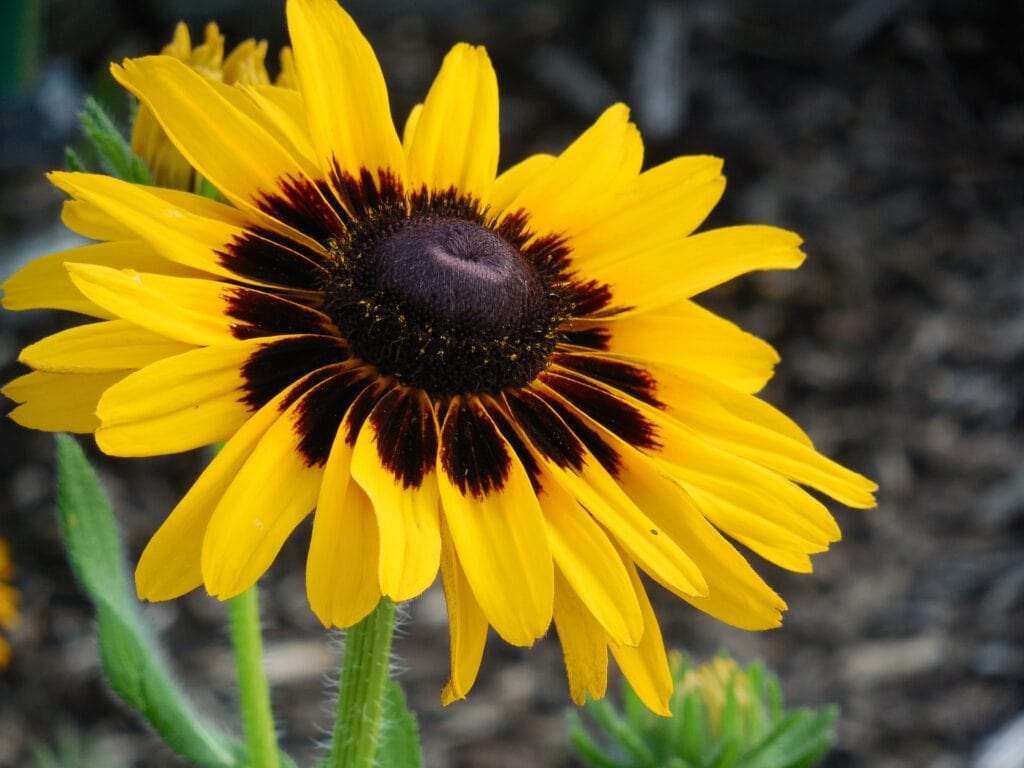
- Latin Name: Rudbeckia hirta
The black-eyed Susan is a yellow daisy-like flower that gets its name from the black center of the flower. It is a perennial and is commonly found in meadows and prairies. It is very popular with pollinators, especially goldfinches, and it is known for its striking looks and is found in parks and gardens, as well as growing wild.
23. Dandelion

- Latin Name: Taraxacum officinale
Dandelions are generally considered weeds. They are very hardy and can grow in almost all soil and growing conditions, which means that they can be found throughout the state. The dandelion is an edible plant, and the leaves and flowers can be used to make tea, jam, or salad.
24. Goldenrod

- Latin Name: Solidago
The perennial goldenrod flower is a native species that grows a vibrant yellow and flowers in summer and fall. It has stiff leaves, but it can take over if you don’t properly maintain the plant in your garden. As a native plant, many insects and animals rely on the goldenrod.
25. Mullein

- Latin Name: Verbascum Thapsus
The annual mullein can grow to heights of approximately 7 feet. The plant is not native, but it is a naturalized species and is found on the side of roads and in meadows. It is a medicinal plant that has been used to treat inflammation and a host of other conditions.
26. Sneezeweed

- Latin Name: Helenium autumnale
Sneezeweed is sometimes known as the false sunflower or bitterweed. It grows to approximately 5 feet tall and is a perennial. It gets its name from the false assumption that it is more likely to cause hay fever and allergic reactions than other plants. It is popular with pollinators and considered an easy plant to grow that can flourish in most growing conditions.
27. Spiny Sow-Thistle

- Latin Name: Sonchus asper
The spiny sow-thistle looks somewhat like dandelion and is found growing across Oregon. This invasive species can overtake a garden, so if you see it growing close by, you should take steps to prevent it from spreading.
28. St. John’s Wort

- Latin Name: Hypericum perforatum
St. John’s Wort is an invasive species that can kill local plant species and is also known to be harmful to sheep and other livestock. So, although the flower has beneficial medicinal properties and is also popular with pollinators including bees and butterflies, you should take care to ensure that it doesn’t overtake planters and gardens.
29. Sunflower
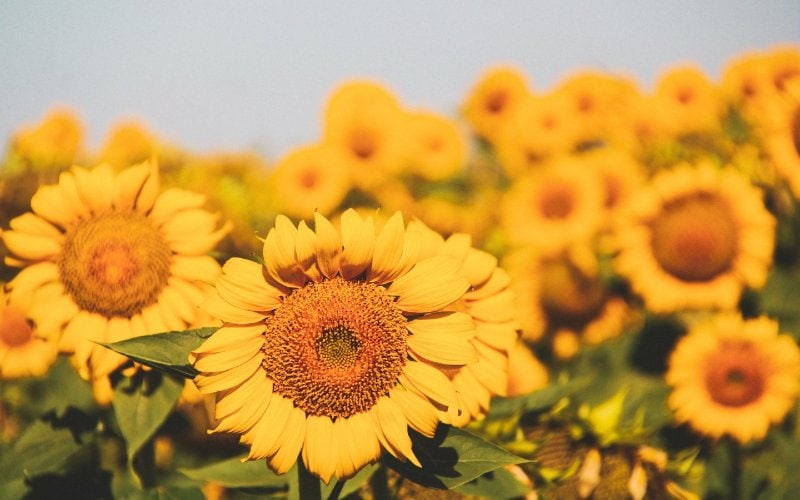
- Latin Name: Helianthus annuus
The sunflower is a well-known wildflower that can grow to heights of 15 feet tall. It has a giant yellow flower and, in the wild, it can be found in fields, prairies, on the roadside, and near forests. Sunflowers are popular with pollinators and various species of birds and sunflower seeds are also a common snack for people to enjoy.
30. Wild Parsnip

- Latin Name: Pastinaca sativa
Wild parsnip should not be confused with the root vegetable that is commonly eaten in countries around the world. Wild parsnips can be prepared and eaten in the same way, but the flowers and leaves are irritants and can cause severe blistering on the skin. The plant grows to 5 feet high and is an invasive species that can threaten native species.

White Wildflowers
31. Catnip

- Latin Name: Nepeta cataria
Catnip is obviously very popular with cats, and this member of the mint family is also edible for humans. It is also considered a medicinal plant. Although it is not native to North America, it is now naturalized in Oregon, and it is usually found in a damp environment, so it is commonly seen next to streams and lakes.
32. English Plantain
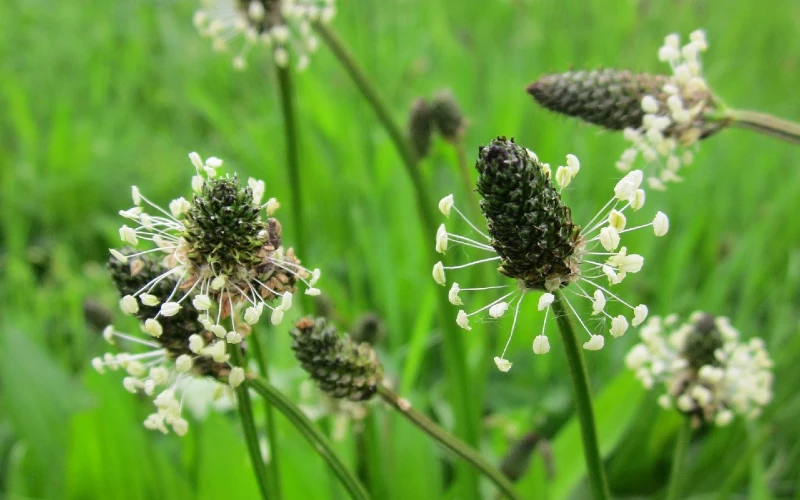
- Latin Name: Plantago lanceolata
Native to Europe and Asia, the English plantain is an introduced species. It grows in disturbed habitats and can be found in meadows and pastures. It is a remarkable plant because it will grow to avoid being disturbed and destroyed by humans. It grows to about 2 feet tall and is a perennial wildflower.
33. Fleabane

- Latin Name: Erigeron annuus
Fleabane grows to about two feet tall and looks somewhat like a daisy. As such, it is sometimes known as the dependable daisy. It is a native species and is popular with gardeners because it has a pretty flower, is a dependable grower, and attracts plenty of different species of pollinators. Fleabane is found in meadows and fields across the state.
34. Indian Hemp

- Latin Name: Apocynum cannabinum
Also commonly known as dogbane, Amy root, rheumatism root, and wild cotton, Indian hemp is native to North America but is also considered a weed because it grows on farmland and can reduce the yield of common crops including cotton. It is also toxic to humans and animals and its sap can cause blistering on the skin.
35. Oxeye Daisy

- Latin Name: Leucanthemum vulgare
The oxeye daisy is a pretty daisy with a yellow center and white petals, but this invasive species grows quickly and to the detriment of native species in the area. It does attract pollinators and reaches approximately 2 feet tall, but white weed, as it is also known, is generally considered undesirable.
36. Queen Anne’s Lace

- Latin Name: Daucus carota
Queen Anne’s lace gets its common name from the lacey appearance of the white flowers. This annual wildflower grows to 4 feet tall and was introduced from Europe. It is considered a weed and can be found in meadows, fields, and grasslands. It is an edible plant, related to the carrot, but is usually only eaten when the plant is young.
37. White Clover

- Latin Name: Trifolium repens
The naturalized white clover can be found throughout Oregon, and it can take over fields and lawns, although it doesn’t usually choke native plants. White clover is also known as shamrock and is best known for its plants which usually have three leaves—it is considered lucky to find a four-leafed clover.
38. Yarrow

- Latin Name: Achillea millefolium
There are many sub-species of yarrow, with some native varieties found in Oregon, as well as some that were introduced from Europe. Yarrow is especially attractive to bees and pollinators and is usually found in forests and grasslands.

Red Wildflowers
39. Blanketflower

- Latin Name: Gaillardia artistata
The vividly colored blanketflower has red and yellow petals, of which there are usually 13, with a red center. The plant grows to 2 feet tall and is most commonly found in meadows and foothills. The blanketflower is a member of the aster family.
40. Crimson Columbine

- Latin Name: Aquilegia Formosa
The crimson columbine is a member of the buttercup family, and the red and yellow flowering plant is most often seen in moist environments like woodland and at the edges of streams. It grows up to 3 feet in height and the tubular shape of the flower makes it popular with hummingbirds.
41. Indian Paintbrush

- Latin Name: Castilleja miniata
There are several varieties of Indian paintbrush in Oregon, including the impressive giant red Indian paintbrush, which grows to 3 feet tall and can be found in meadows and forests. Although usually found in a deep red color, there are some hybrids that have pink or orange flowers.
42. Orange Agoseris

- Latin Name: Agoseris aurantiaca
The orange agoseris, which is also known by the name mountain dandelion, grows to 2 feet tall and, as its name suggests, is usually found in mountainous regions. It prefers clearings and meadows.
43. Orange Hawkweed

- Latin Name: Hieracium aurantiacum
Orange hawkweed goes by a variety of names including devil’s weed and orange aster. It is a member of the aster family and is generally considered a weed because it is an introduced species and it grows very fast.
44. Scarlet Bee Balm

- Latin Name: Monarda didyma
Honeysuckle is a native wildflower that attracts a lot of pollinators including hummingbirds. It grows up to 4 feet tall and it can be seen in forests but is most often seen in gardens, parks, and other planned planting areas.
45. Spotted Touch-Me-Not

- Latin Name: Impatiens capensis
The spotted touch-me-not isn’t toxic or dangerous to touch, but it does have seed pods that are extremely delicate. If you touch them, they will release their seeds. Because of this, the spotted touch-me-not is popular with birds that feed on the seeds. It is also a popular plant with game birds like grouse and pheasants.

Conclusion
Oregon has varied ecological features, from large mountain ranges to rivers and even desert regions. This means that the wildflowers in the region are equally varied.
Above are 45 examples of some of the wildflowers that you might see while out in the state, but there are many others, as well as those that have hybridized, therefore increasing the range of plants even further.
Featured Image Credit: pixel2013, Pixabay
Contents

